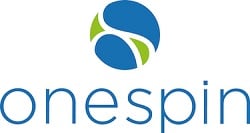By Jim Hogan 09-04-2019
Most of my investments are associated with large changes in the semiconductor industry. These changes create opportunities for new and disruptive technologies. I also look to find solutions that provide a compelling reason to adopt a new technology or approach. When talking about a new approach, it often takes longer to overcome the status quo.
In this thesis, I establish the notion of IC Integrity and the impact that this will have on what has traditionally been viewed as the design verification market. I love getting feedback, and I also love to share that feedback with people, so please let me know what you think. Thanks – Jim
Functional verification is a process for reducing risk associated with bugs in the design escaping into the tape-out of a semiconductor product. Historically, the market segment that the end product was intended for defined the acceptable level of investment put into functional verification. A few years ago, this long-standing equation catastrophically failed. The failure was in the inability to find those bugs largely due to the increasing use of embedded software. At the same time, verification for functional correctness has been increasing as a percentage of the total cost of design.




